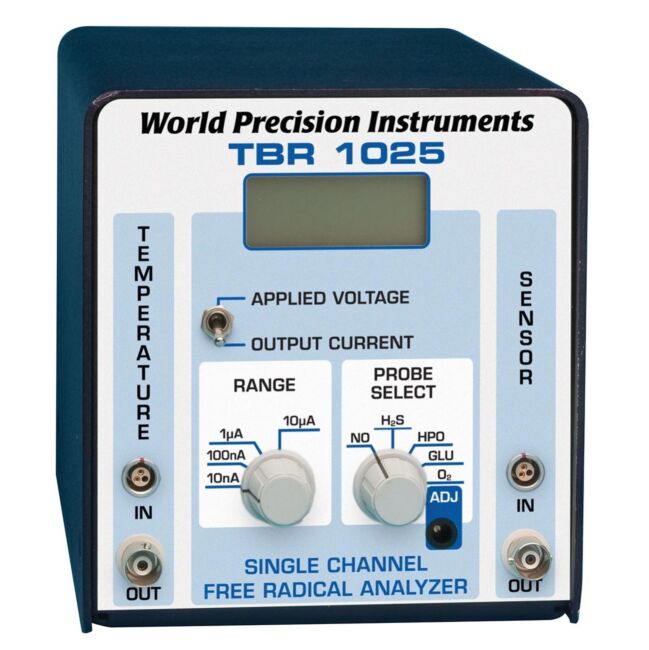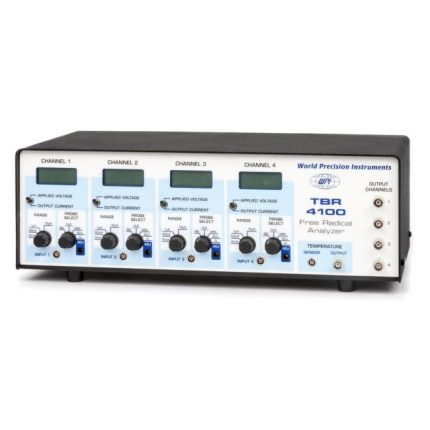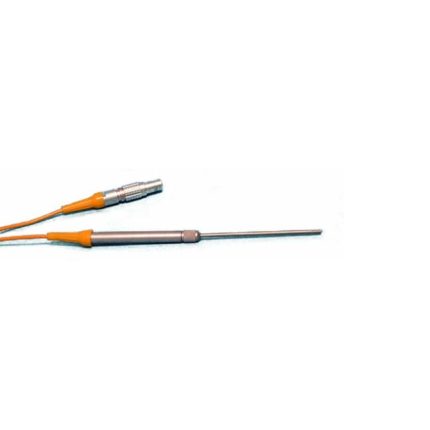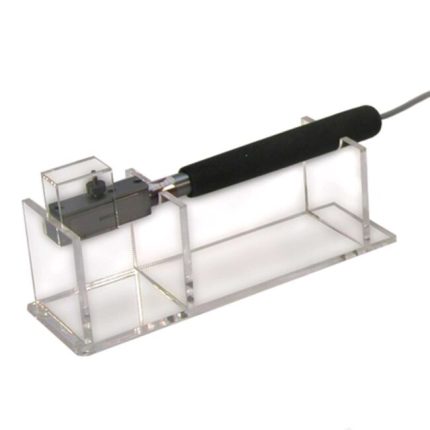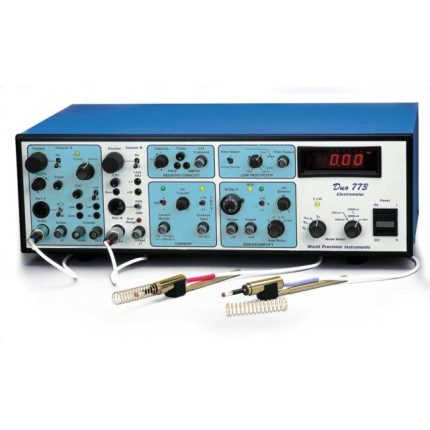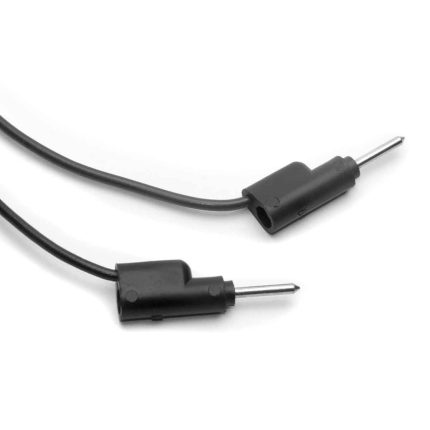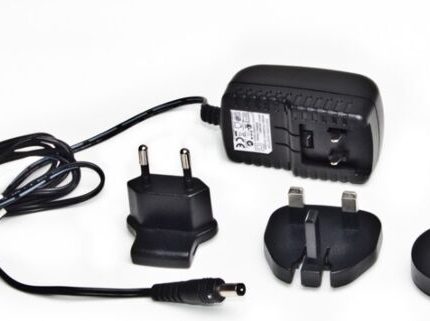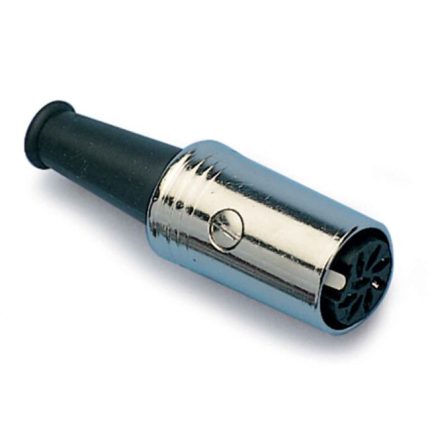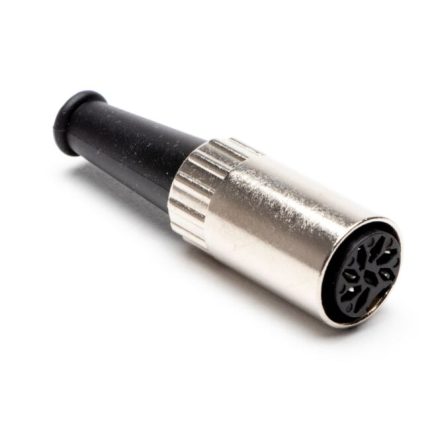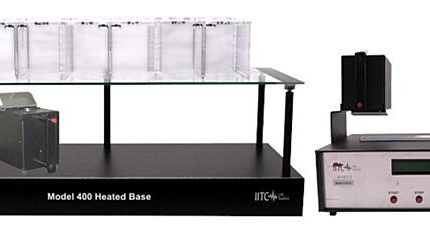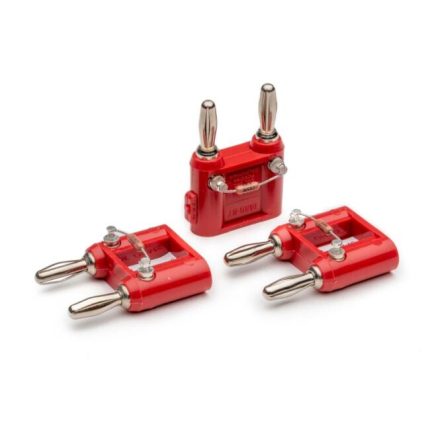| Power | 100 ~ 240 VAC, 50-60 Hz, | ||||||||||||||||||||
| Operating Temperature (ambient) | 0 – 50°C (32 – 122°F) | ||||||||||||||||||||
| Operating Humidity (ambient) | 15 – 70% RH non-condensing | ||||||||||||||||||||
| Warm up Time | < 5 min. | ||||||||||||||||||||
| Dimensions | 135 X 419 X 217 mm (5.25″ X 16.5″ X 8.16″) | ||||||||||||||||||||
| Weight | 1.35 kg (3 lb.) | ||||||||||||||||||||
| Display Functions | 18 mm (0.7″) LCD readout, 4.5 digit Polarization Voltage (mV) Current input (nA, µA) | ||||||||||||||||||||
| Controls | Power (on/off) Current Input Range Polarization Voltage |
||||||||||||||||||||
| Analog Output Range | ±10 V (continuous) | ||||||||||||||||||||
| Analog Output Impedance | 10 KΩ | ||||||||||||||||||||
| Channel to Channel Isolation | >10 GΩ | ||||||||||||||||||||
| Channel to Output Isolation | >10 GΩ | ||||||||||||||||||||
| Power Supply to AC Line Isolation | >100 MΩ | ||||||||||||||||||||
| Analog Output Drift | < 10 pA/hr. | ||||||||||||||||||||
| Temperature Input: Number of Channels | 1 | ||||||||||||||||||||
| Temperature Input: Sensing Element | Platinum RTD, 1000 Ω | ||||||||||||||||||||
| Temperature Input: Range | 0-100°C | ||||||||||||||||||||
| Temperature Input: Accuracy | ± 1°C | ||||||||||||||||||||
| Temperature Input: Resolution | 0.1°C | ||||||||||||||||||||
| Temperature Input: Analog Output | 31.25 mV/°C (continuous) | ||||||||||||||||||||
| Amperometric Input: Number of Amperometric Channels | 4 | ||||||||||||||||||||
| Amperometric Input: Signal Bandwidth | 0-3 Hz | ||||||||||||||||||||
| Amperometric Input: Polarization Voltage (selectable via rotary switch) Nitric Oxide | 865 mV | ||||||||||||||||||||
| Amperometric Input: Polarization Voltage (selectable via rotary switch) Hydrogen Sulfide | 150 mV | ||||||||||||||||||||
| Amperometric Input: Polarization Voltage (selectable via rotary switch) Hydrogen Peroxide | 450 mV | ||||||||||||||||||||
| Amperometric Input: Polarization Voltage (selectable via rotary switch) Glucose | 600 mV | ||||||||||||||||||||
| Amperometric Input: Polarization Voltage (selectable via rotary switch) Oxygen | 700 mV | ||||||||||||||||||||
| Amperometric Input: Polarization Voltage (selectable via rotary switch) ADJ (user adjustable) | ± 2500 mV | ||||||||||||||||||||
| Polarization Voltage Accuracy | ± 5 mV | ||||||||||||||||||||
| Polarization Voltage Display Resolution | ± 1mV | ||||||||||||||||||||
| Current measurement Performance: |
|
||||||||||||||||||||
| Notes: | *Instrument performance is measured as the (max-min) over 20 seconds period with open input. Typical values are given at 3 Hz and 0.3 Hz bandwidth. | ||||||||||||||||||||
| Typical sensor performance with TBR4100: ISO-NOPF100 noise | 0.2 nM NO (< 2pA **) | ||||||||||||||||||||
| Notes: | **Sensor noise is measured as the (max-min) over a 20 seconds period with the sensor immersed in 0.1 M CuCl2 solution. |
ONE-CHANNEL FREE RADICAL ANALYZER
Сatalog number:
TBR1025
Categories: Analyzers, Instruments/Platform, TBR1025 Analyzer
Description
Shipping & Delivery
Related products
Von Frey Probe
To assess mechanical allodynia, which is a painful response to a light touch or pressure from a stimulus that is not normally painful, the Electronic von Frey Anesthesiometer was developed. The Electronic von Frey meter uses one of 15 different flexible von Frey hairs called “SuperTips™” (or rigid tips up to 800 grams). Each hair, regardless of model chosen, is exactly 0.8 mm in diameter. This uniformity of design eliminates false readings and allows for comparison of test results. The Electronic von Frey can be used with chart recorders and analog/digital converters, and it never needs calibrated. This system includes either a 90, 800 or 1,000 gram probe. Mesh stands are available in a variety of sizes for large group studies.
Duo 773 Electrometer
Connector, adapts WPI Transducers to non-WPI equipment
Plantar Test Analgesia Meter
his unit, which is designed for testing narcotics and strong non-narcotic drugs, offers both Plantar (Hargreaves Method) and Tail Flick testing with a single unit. Either testing system is also available individually.
II-390G : In plantar mode, the visible light/heat source is directed at the paw or other desired body part, and in tail flick mode it is directed at the subjects’ tails. Test up to 12 mice or 6 rats simultaneously.
Сatalog number:
DRL
Dummy Load Resistor Kit
A365 can be used as a precise voltage source by placing a precision “dummy” resistor load across the output terminals. Precision resistors (such as the 100 Ω, 1000 Ω and 10,000 Ω resistors in WPI’s optional Dummy Load Resistor Kit #DRL) when placed across the output terminals convert the precision current levels to accurate voltage levels.
For example, 1 milliampere flowing through 1000 Ohms will produce 1 volt across the output terminal pair. Thus, models A365D and A365R can be used as low noise sources of accurate voltage pulses or DC. To maintain less than 1% error, avoid shunting the output dummy resistor with a load resistance less than 100 times the dummy resistance value.
ISO-NOPF Flexible Nitric Oxide Sensor
Analyzers, Amplifiers, Instruments/Platform, Free Radical Analyzers, Biosensors, Nitric Oxide Sensors
ISO-NOPF electrodes are available in 100 µm, 200 µm and 500 µm diameters. Utilizing the latest advances in nano-technology and material science, scientists at WPI’s Sensor Laboratory have created these completely flexible and virtually unbreakable NO sensors. The new sensors are based on a composite graphite NO-sensing element combined with a reference electrode. The surface of the sens

